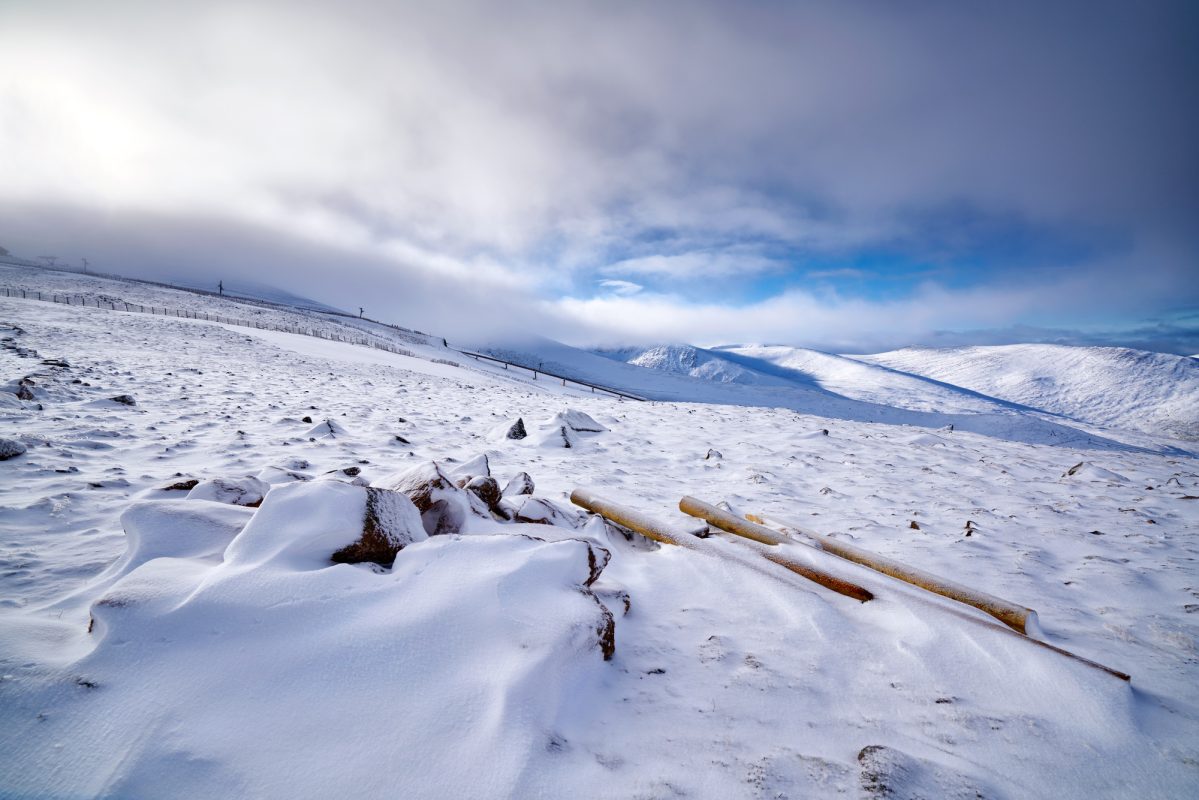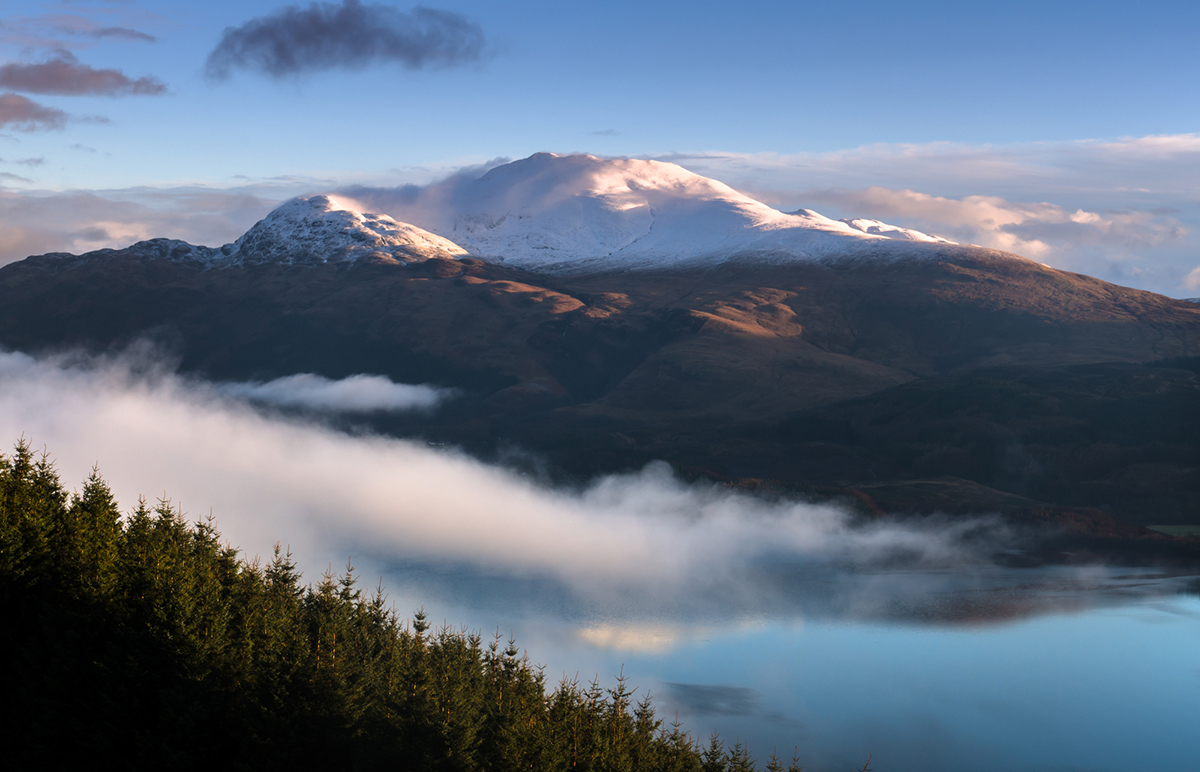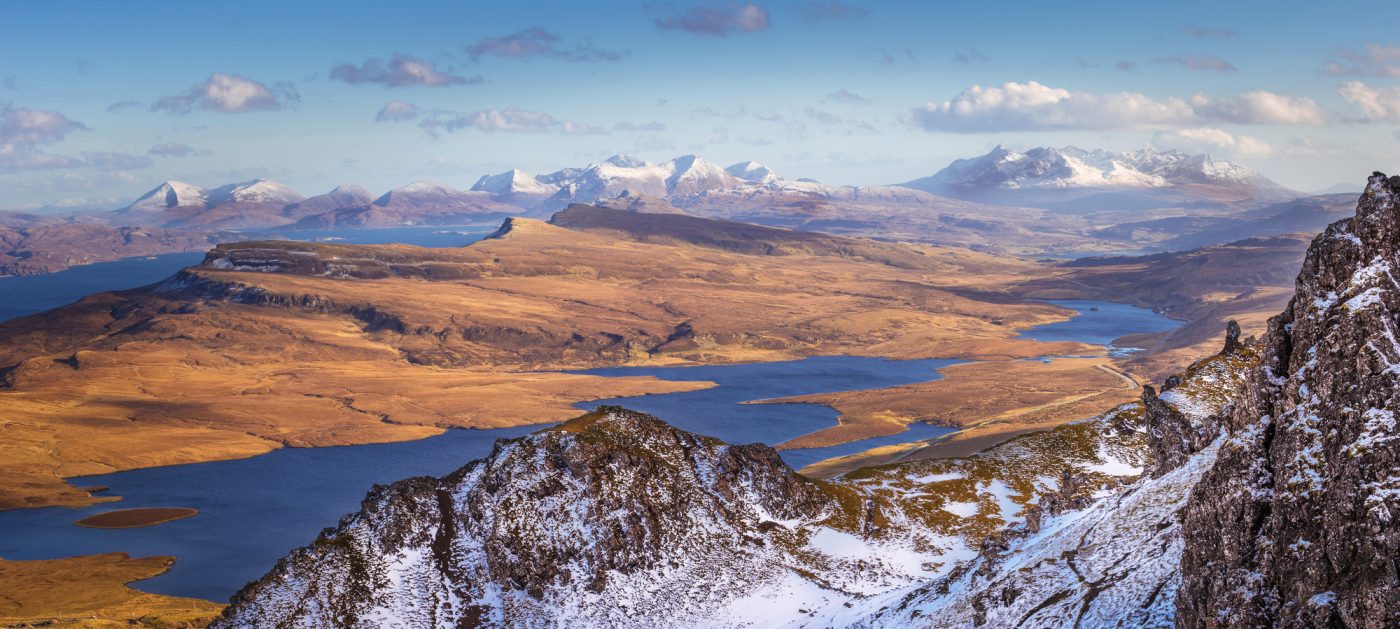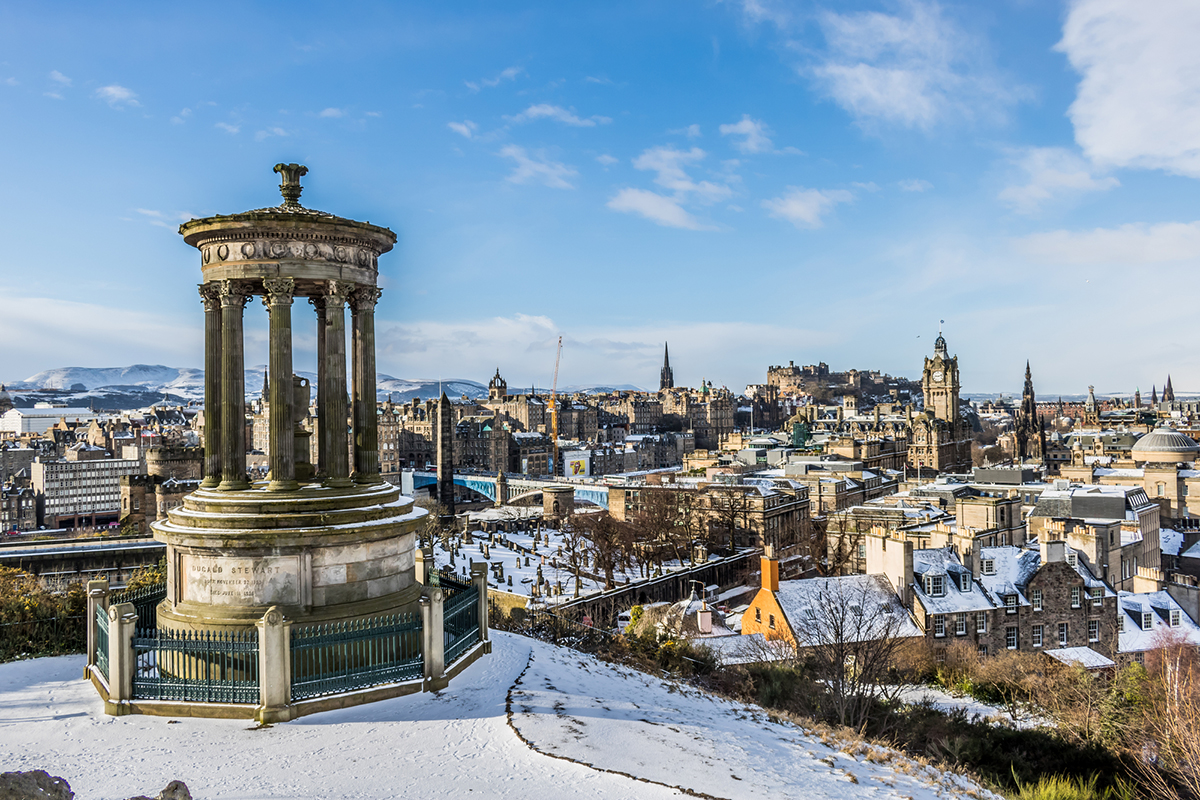When does it snow in Scotland? Is it guaranteed in the cooler months? Are there winter sports available there every year?
I’m going to be answering all your questions in this article!
First up, yes, it does snow in Scotland, and yes, winter sports enthusiasts will be glad to know that there are skiing and snowboarding slopes!
However, snow’s not as guaranteed here as it is in continental European destinations, which means that it’s never guaranteed, and ski resorts aren’t typically guaranteed to be open all winter round.
Nonetheless, it’s still a beautiful winter destination, and if you’re visiting in January and February, you’ll probably see some snow at some point!
I’m a UK local, and I know first-hand just how different Scotland’s weather can be to Southern England, where I live.
So, in this article, we’ll go into the average snow accumulation, why it snows in Scotland more than England and the array of winter activities this country has to offer.
Does it snow in Scotland?

Yes, it’s certainly snowier in Scotland than elsewhere in the UK – but the amount and frequency of snowfall depends on where you are.
Snowfall in Scotland varies considerably depending on the region, ranging from the frequent and heavy snows in the Highlands to the more sporadic and light snowfall in cities like Edinburgh and Glasgow.
Compared to other parts of the UK, Scotland experiences more snowfall due to its northern latitude and mountainous terrain.
During a typical winter season, areas like the Highlands can see snowfall lasting from November to April.
While cities like Edinburgh and Glasgow do get snow (more so than London and other Southern cities in England) it’s often less consistent and the snow tends to melt within a day or two.
Scotland’s often not what you’d think of as a destination for winter sports. But they are available here, although they’re not always open depending on the accumulation of snowfall.
When Does it snow in Scotland?

Scotland’s diverse geography and northern latitude result in to varied snowfall patterns across the country.
Let’s take a look at a season-by-season breakdown.
Does it snow in Scotland in October?
October is generally mild in most parts of Scotland, and snow is rare.
There are occasional flurries of snow in the Highlands towards the end of the month; but generally this month remains snow-free.
Despite Scotland’s northern location, it’s not like places like Tromso, which are much further north in the Arctic regions and start to see winter in October!
Does it snow in Scotland in November?
By November, the chance of snow increases, especially in higher elevations.
The Highlands often see their first consistent snowfalls and there’s rare snow in lower-lying parts of the country.
Does it snow in Scotland in December?
December typically sees more days of snowfall.
While the lowlands and cities like Edinburgh and Glasgow might get a dusting around Christmas (adding to the festive atmosphere!), the Highlands usually have heavier snow.
There are a few limited ski resorts in Scotland, and they may open in December – but it’s very weather-dependent, and typically they’re more likely to be open later in winter.
Does it snow in Scotland in January?
January is the peak snow season in Scotland.
Even cities in the south experience occasional snowfall.
However, the Highlands get the bulk of it; it’s the snowiest place in all of the UK, for sure!
Does it snow in Scotland in February?
Snowfall continues in February, and it’s still commonplace in the highlights. You’ll find snow in some of the southern cities too – for example, Edinburgh has 10 days of snow in February.
Does it snow in Scotland in March?
March brings the tail end of the snow season.
While early March can be quite snowy, especially in the Highlands, conditions start to taper off as the month progresses.
That said, the ski resorts often stay open throughout March, as enough snow has accumulated throughout the coldest months.
Where Does It Snow in Scotland?

Scotland’s diverse geography plays a significant role in determining where you’ll encounter snow.
From the lowlands to the highlands, each region has its own weather patterns and likelihood of snowfall.
Here’s a breakdown..
South Scotland (including Edinburgh and Glasgow)
Snowfall in the southern regions, including Edinburgh and Glasgow, tends to be lighter and less frequent compared to other parts of the country.
So, you might see Edinburgh Castle with a dusting of snow – especially if you’re visiting from December to February – but significant accumulations are rare.
Urban heating effects in these cities also mean that the snow melts quickly!
East Scotland
The eastern stretch of Scotland, running from Fife through to Aberdeen, usually experiences moderate snowfall.
Although snowfall here is less abundant than in the Highlands, the colder temperatures can result in snow sticking around longer.
This part of the country often receives easterly winds that bring cold air, and consequently, snow.
West Coast of Scotland
The west coast has a milder, more maritime climate, with less frequent snowfall.
The influence of the Atlantic Ocean makes the climate more temperate, but you’ll still see occasional snow, especially in elevated areas.
The general rule here: the further inland you go, the more likely you’ll encounter snow.
Highlands
The Highlands are your best bet for finding substantial snow, particularly from December to March.
The region’s altitude and latitude contribute to frequent snowfall.
However, average temperatures are still lower than other mountainous regions in Europe, often with more mild weather conditions and less reliable snow than, for example, The Alps.
This is due to the UK’s general maritime climate – which we’ll go into a little more in a moment!
Scottish Islands (Hebrides, Orkneys, Shetlands)
When it comes to the Scottish Islands like the Hebrides, Orkneys, and Shetlands, snowfall is somewhat of an anomaly.
These islands have a maritime climate and are warmed by the sea in the winter – making them less conducive to heavy snowfall.
The unique weather patterns and ocean currents surrounding these islands result in milder winters, so don’t expect too much snow if you visit!
Why does it snow in Scotland?
So, why does it snow in Scotland more than England? But, why doesn’t it snow as much as you might expect, particularly considering its northern location?
It’s all about Scotland’s geographical features!
Situated further north than England, Scotland’s latitude inherently exposes it to colder temperatures, especially during the winter months.
Latitude and altitude
Scotland’s higher latitude makes it more susceptible to Arctic air masses than England.
When these cold air masses sweep down, they bring lower temperatures and often, snow.
Altitude is another factor; with more elevated areas, Scotland sees more snowfall in its mountainous regions compared to the lowlands of England.
Ocean Currents
Scotland is impacted by the North Atlantic Drift, an extension of the Gulf Stream.
This usually moderates temperatures but can also bring wetter air that, when meeting cold fronts, turns into snowfall.
England is also affected by this current but experiences milder effects due to its southern position and the insulating effect of Scotland itself.
Proximity to moisture
Both Scotland and England have coastlines, but Scotland’s more varied coastline, with inlets, lochs, and proximity to the ocean, provides more opportunities for moist air to collide with cold fronts, resulting in snow.
Impact of the jet stream
The position of the jet stream can also influence snowfall.
When it shifts south, it allows colder air to dominate Scotland while often leaving England with milder air from the Atlantic.
By comparing these factors, it’s evident that Scotland’s geographical and climatic conditions make it more conducive to snowfall than England!
While England does experience snow, it’s typically less frequent and less intense than Scotland.
Snow activities in Scotland

Skiing in the UK?!
That’s right, it’s possible in the Scottish Highlands when winter temperatures drop just enough for snow sports and other winery outdoor activities!
Snow sports
Scotland is home to several ski resorts that, while not as grand as the Alps, are often open during the late winter months (but do check before you travel).
Glenshee is the largest ski resort in Scotland. In snowy weather, it has over 40 km worth of pistes.
Cairngorm Mountain near Aviemore is probably the most popular and well-known ski centre in the country.
There’s also Glencoe Mountain Resort (near the famous Glen Coe) a more compact area that provides a mix of runs for both beginners and experts.
If snowboarding is more your style, head to Nevis Range near Fort William.
This resort is popular among snowboarders for its range of slopes and natural halfpipes. It’s just a two-hour drive from Glasgow, making it accessible for a weekend trip.
Another popular location for snowboarders is The Lecht in the Eastern Highlands. A bit smaller and less crowded, it’s an ideal spot for beginners to find their footing.
Ice Climbing
Once you’ve used all your adrenaline skiing and snowboarding, how about ice climbing? Brr!
Ben Nevis, the highest mountain in the British Isles, is a hotspot for ice climbing, with frozen waterfalls and challenging ascents.
If you’re closer to the Cairngorms, areas like Lochnagar offer equally challenging ice-climbing routes.
Do not try this solo: I’d only recommend doing it as part of a guided tour.
Tips for Scotland in the snow

So, how do you best enjoy Scotland in the snow?
Here’s what you need to know before you head out into the winter chill.
Check websites for accurate weather forecasts
Before venturing out, it’s crucial to check the weather forecast.
Websites like the Met Office (most accurate, IMO) or BBC Weather provide detailed, up-to-date information.
Use specialized sites like Winterhighland for skiing or snowboarding.
Winterhighland which gives accurate snow reports for Scotland’s ski areas.
Wear the right clothes
In Scotland in winter, layers are your best friend!
Start with thermal underwear, add a fleece for insulation, and finish with a water-resistant outer layer.
Don’t forget a hat, gloves, and good-quality winter boots with a strong grip.
If you’re heading to the slopes, specialized ski wear is recommended.
Drive safely
If you plan to drive, be prepared for icy and snowy roads.
Always check the road conditions on Traffic Scotland’s website before heading out.
Carry a winter car kit with a shovel, windshield scraper, and maybe even some sand or salt.
Hike safely too!
If you’re going hiking or climbing, let someone know your itinerary and when you plan to return.
Always carry a fully charged phone, but remember that you may not always have signal in remote areas.
FAQs about snowfall in Scotland
Here are some answers to frequently asked questions about Scotland in the snow!
Does Scotland Get any snow?
Yes, Scotland does get snow, primarily during the winter months.
Snowfall is more frequent and intense in the Highlands and less common in the southern and coastal areas.
What are winters like in Scotland?
Temperatures in winter in Scotland are cold and it’s often snowy, especially in the Highlands.
Temperatures can dip below freezing, and winter storms are not uncommon. However, expect unpredictable weather in places like Edinburgh and Glasgow. Even in the Highlands, snow isn’t guaranteed.
Winter nights in Scoaldna re typically very cold.
Which part of Scotland has snow?
The Highlands of Scotland are the most likely to have snow, often from late autumn through to spring.
Snow in the south, including cities like Edinburgh and Glasgow, is less frequent but still occurs.
Does it snow in Scotland for Christmas?
Snow conditions for Christmas vary from year to year and place to plface, but white Christmases are relatively rare in Scotland’s cities.
However, the Highlands have a fairly good chance of the white stuff!
Is Scotland colder than England?
Generally, yes. Scotland’s northern latitude and diverse topography contribute to its colder temperatures, especially when compared to southern England.
Is Scotland the coldest place in the UK?
Scotland has some of the coldest areas in the UK, particularly in the Highlands.
What part of Scotland is coldest?
The Highlands are typically the coldest part of Scotland, with lower temperatures and more snowfall than other regions, as they are at altitude and sit close to the north of the UK.
Is Scotland Colder Than Russia?
Russia, particularly its northern regions, experiences much colder temperatures than Scotland.
Even Moscow, which is in European Russia, often has colder winters than most places in Scotland.
Are you ready to check out the snow in Scotland?
So, if you’re heading up north for a Scottish winter, hopefully this guide has shown you what to expect!
Virtually everything is possible – from light snow showers in the southern major cities to snowy landscapes as you venture into the highlands.
Whatever the weather, you’ll be encapsulated by Scotland’s charm in the cooler months.
With historic castles, enchanting mountains and rugged islands, it’s a beautiful country – and while it’s busy in the summer, winter gives it an effortless charm, almost like it’s letting you in on a little-known secret.

